Pratima Gurung is an academic activist based in Nepal, who has advocated for an intersectional rights-based approach across global and local platforms, since 2006. Her work is centred on indigenous people, by ensuring accessibility to fundamental rights and safety. Critically, she has worked on making disaster relief more accessible and raising awareness about the impacts of climate change within grassroots communities.
“It was COP21 and I was, for the first time, selected to attend as a member of the Asia Indigenous People’s Pact. I think, in context of the earthquake, this experience really united us in the movement and brought in many different experiences to disaster relief and climate conversations. So, disability rights was a new emerging agenda within the indigenous people’s movement, but the experiences of indigenous people with disabilities in that domain were really new.“
Pratima Gurung
Pratima is also a faculty member teaching at Padmakanya College, under Tribhuvan University and a leading member of several national and global activist networks, representing different constituencies at the UN. Through initiating cross-movement collaborations, she has been instrumental in amplifying the multiple and intersecting marginalised voices within the environmental justice discourse and action framework.
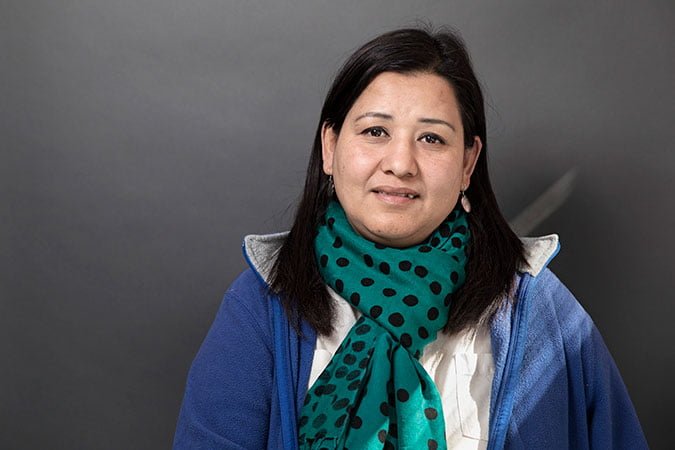
FII in conversation with the academic activist Pratima Gurung on intersectionality and rights of indigenous women with disabilities.
FII: You have experience working at high-level international policy platforms such as the Climate Conference of Parties. What is your experience been?
Pratima: We had an earthquake in 2015 in Nepal, which was quite unexpected and surprising. This was a very different and new experience for our generation, especially for people with disabilities and marginalised groups like women, indigenous peoples and others, because this disaster had such unique impacts on us. Many, including indigenous women with disabilities, were kicked out by their house owners and forced to live in open spaces. This often led to young indigenous women being exposed to indirect and direct forms of violence, abuse and harassment, including rape. For up to nine months, they were forced to live in these same spaces on open grounds leading to great risk to safety.
It was COP21 and I was, for the first time, selected to attend as a member of the Asia Indigenous People’s Pact. I think, in the context of the earthquake, this experience really united us in the movement and brought in many different experiences to disaster relief and climate conversations. So, disability rights was a new emerging agenda within the indigenous people’s movement, but the experiences of indigenous people with disabilities in that domain were really new.

I had the critical opportunity to share our collective stories from lived experiences and negotiate with member states at the COP. During the 2015 earthquake disaster relief programmes, everyone was giving us food. But we did not require food. People did not have crutches, people did not have wheelchairs, or other basic, primary needs.
Although we got to be a part of the UNFCCC’s processes, the perspectives of indigenous peoples and people with disabilities often did not matter. It was more about negotiations between the rich countries and the poor countries. Some states were open while others were reluctant. We focussed on our negotiations through collective campaigns, silent protest, media press, involved in negotiations to include indigenous people, people with disabilities, and women in the Paris (Climate) Agreement and helped build that initial foundation within the climate change space. At that time, I was part of the indigenous people constituency and was the only person with disabilities in that space, which made me realise the importance of intersectional approach.
“We are currently working with communities in the mountainous regions of Nepal because this area of the Himalayas is prone to glacier melting, which is a critical cause of avalanches. Even smaller ones are difficult and we are not prepared for the disasters that may happen as these ecosystems degrade further.“
Pratima Gurung
This led us to do our grassroots work back home, after COP21. We started having conversations about the impact of climate change, but most people weren’t aware of climate change, even though they were the most affected. Disaster and climate change are interlinked but the approach was siloed and it was associated with vulnerability. When we look at the most vulnerable within one constituency—for instance, within indigenous people, indigenous people with disabilities are often at risk but are not part of the movement’s agenda for inclusion. That’s where intersectionality, indigenous intercultural approach, and disability inclusion matter.
FII: What is your work like now, at the local and grassroots level?
Pratima: We are currently working with communities in the mountainous regions of Nepal because this area of the Himalayas is prone to glacier melting, which is a critical cause of avalanches. Even smaller ones are difficult and we are not prepared for the disasters that may happen as these ecosystems degrade further. And persons with disabilities, indigenous peoples residing in high Himalayas and including women are more adversely impacted by it.
There is a lack of awareness on inclusive response, mitigation, adaptation at community level and the climate change resources and funds are not reaching these groups. So we are working to sensitise and be aware of disability inclusive climate actions with intersectional lens among the community which is primary intervention and this intervention has to be followed by other CSOs, governments, multilateral organisations and development partners working on environmental justice initiatives at all levels. In 2023, we are trying to work towards reaching out to the communities in these regions, which would culminate in a landmark report for advocay.
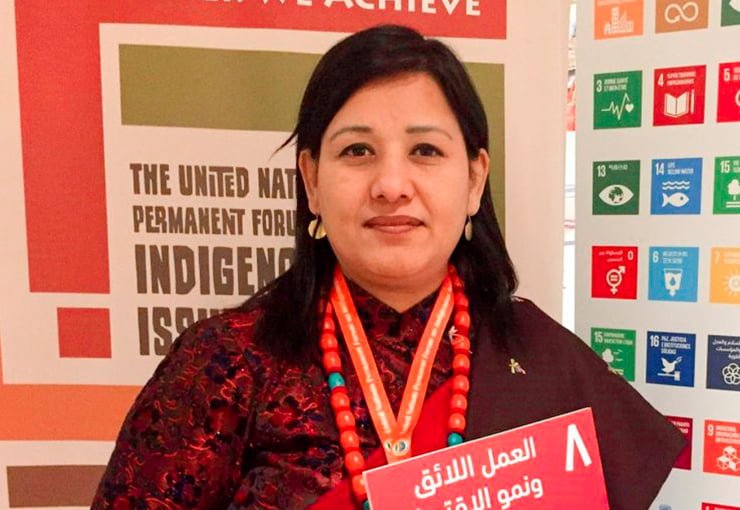
Additionally, here, our interventions are often long-term and very slowly progressive. It is difficult to plan things over the course of time and hence even more difficult to gain funding. If I am an activist going to a community where people are dying of food, I am not going to start talking to them about climate change—this doesn’t make sense. We are from the global south and the reality is very different within marginalised communities. I will first have to ensure accessibility of food, the fundamental right to health—and then advocate for raising awareness on the impacts of climate change on this community. This takes a lot of time and effort.
Also Read: FII Interviews: Mayfereen Ryntathiang On Indigenous People’s Rights In Meghalaya
We also face challenges with the local government. We conduct sensitisation workshops with one set of government officials and employees, but they get transferred so often that we don’t have a group of people we can reliably work with. These are the challenges we face. Overall, our advocacy works from the grassroots and local levels, then to the national and international levels.
FII: Could you tell us a little about your work as an academic activist?
Pratima: I serve as advisory members with the Mcgill University in Canada which has a focus on disability inclusive climate justice initiatives and some of the research work is related with the Harvard School of Law. And this is a very different experience of sharing grassroots literature and evidence. By contributing to these researches, enable us to connect as academics and activists to the global space, which has the power to influence policy. It’s really important to frame policy interventions from an intersectional lens, coming from a place of being an activist, an academic and also a right-holder and indigenous woman with disabilities.
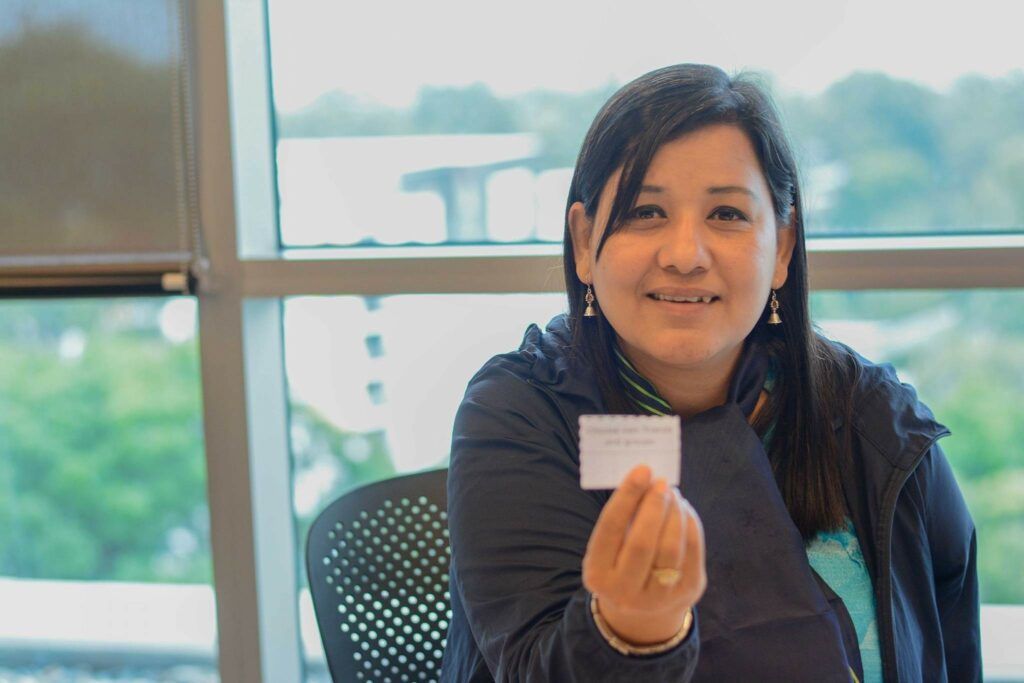
One of the studies by the university highlighted the fact that people with disabilities are missing from Nationally Determined Contributions (NDC: a country’s climate action plan for mitigation and adaptation). Hence, we need to have effective participation in the UN and its constituencies. Yet, we do not have a recognised person with disabilities constituency or caucus. We are trying to do this disability-inclusive intervention from the policy perspective. At the same time, we are also working from the academic perspective by trying to gather research and information from the grassroots. The impacts of climate change on indigenous people, people with disabilities, women, and people from other marginalised groups are gauged by our research on-ground.
“Having worked in this movement for over 20 years, we have realised the critical need for an intersectional lens, because otherwise the movement becomes too linear. This is a missing discourse. As an academic, I also realised that activism is important to ensure that academic research gets translated into policy with more efficiency and speed.”
Pratima Gurung
Having worked in this movement for over 20 years, we have realised the critical need for an intersectional lens, because otherwise, the movement becomes too linear. This is a missing discourse. As an academic, I also realised that activism is important to ensure that academic research gets translated into policy with more efficiency and speed. Otherwise, policy changes based on research take years and years to happen after the research has actually been conducted.
FII: When it comes to mitigation and adaptation, how would effective environmental justice manifest for indigenous women with disabilities?
Pratima: We know that adaptation and mitigation are strategies at the global level. These are also things that indigenous experience and do every day. However, this language is too technical and they aren’t aware of this kind of language—they are coping and working in their own ways in their day-to-day lives, with their shared values and philosophy. Mitigation and adaptation haven’t been very constructive at our local advocacy level.
“This CSWs title was important and significant to the rest of the world. However, for indigenous women with disabilities, digital world is not our space. It is not a regular phenomenon for us. Our indigenous values and principles are derived from one generation to the other, in the form of stories, in the form of music, in the form of folklore—this is our domain. When we talk about the digital space, it comes with eurocentric values and developed countries’ narratives.“
Pratima Gurung
We are able to have more discussions at the grassroots level when discussing the impact of climate change. This is what directly impacts them. We are being resilient but the ‘being of resilient’ has not been a process of discussion. Acceptance and internalisation is required.
FII: In the context of the recent CSW—CSW67—which was about the intersections of gender and technology, how are the experiences of indigenous women with disabilities located in this kind of discourse?
Pratima: This CSWs title was important and significant to the rest of the world. However, for indigenous women with disabilities, digital world is not our space. It is not a regular phenomenon for us. Our indigenous values and principles are derived from one generation to the other, in the form of stories, in the form of music, in the form of folklore, oral history—this is our domain that has been transferred from one generation to the other. When we talk about the digital space, it has become a required need and we are not aloof from it, but it comes with eurocentric values and developed countries’ narratives. For indigenous people, this is really a form of neo-colonisation—different forms of colonisation. This does not mean that we totally avoid technology: yes, today, many indigenous people’s organisations have a smartphone in their hands, because they are bound to use their smartphones.
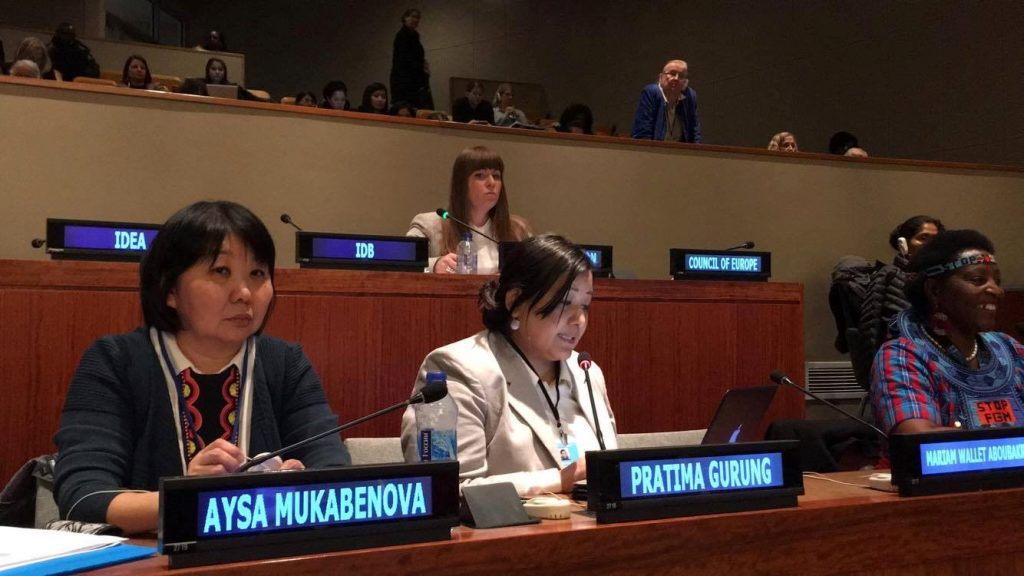
This doesn’t mean that things are improving. Accessibility and affordability are difficult, more so due to structural barriers and especially for indigenous women with disabilities. There is also a lack of awareness and acceptance of such technology. So, technology has to be easy, accessible, affordable, acceptable within cultural context and have access in all manner.
FII: State and non-state corporate actors continue to exploit nature without considering indigenous perspectives—actions which are often rooted in casteism, classism, capitalism and neocolonialism. What is the situation pertaining to this aspect of environmental policy in Nepal?
Pratima: This is the same everywhere because indigenous people’s values and systems are related to the land territories and natural resources: water, forest, land—these are the primary things that are associated with indigenous people’s lives, wisdom and knowledge. Everything for us comes from these primary things. This is our identity.
Most indigenous people’s land territories and natural resources are captured by state and non-state actors in the name of different activities—in the name of development, in the name of making big buildings, in the name of making hydropower facilities. Indigenous people have been living here for hundreds of years, but the government does not take a rights-based approach. The government does not recognise the dignified life that indigenous people need to have, despite the fact that indigenous people contribute to 80% of the world’s biodiversity.
“Free Prior and Informed Consent, the right to self-determination and the right to self-dignity—this is critical for human rights and must be respected. When these rights are not upheld, indigenous people, including people with disabilities, are losing their lives, being killed, and being murdered, in different forms—and their identity is in threat. The most extreme form is genocide in different parts of Asia.”
Pratima Gurung
Free Prior and Informed Consent, the right to self-determination and the right to self-dignity—this is critical for human rights and must be respected. When these rights are not upheld, indigenous people, including people with disabilities, are losing their lives, being killed, and being murdered, in different forms—and their identity is in threat. The most extreme form is genocide in different parts of Asia.
During the COVID pandemic, the whole Chepang community’s homes were burnt down at midnight. The armed police harrased, abused, and attempted to rape the women, who were looking after their babies and their clothes at the time. This was one serious human rights violation, but in the name of the pandemic, the government of Nepal and its human rights commission failed to make any kind of intervention, security provisions or compensation.. This led to Amnesty International finally reporting on it.
FII: Speaking of the right to health, what do the intersections of health and environmental justice look like to you?
Pratima: Indigenous peoples are no longer permitted to use the community forest to source basic, traditional, and healthy foods. This has impacted the community’s health and increased vulnerability during disasters and in normal settings. They are now reliant on alternate sources of food and livelihood, which is difficult for most indigenous communities as they get low paid jobs or do not have jobs.
A case study of a Chepang girl/woman with disability who participated in a research project that was developed into a short video by us, could not access water for her menstrual needs, because the water sources of the community had dried up. Local health posts also do not have an understanding of indigenous values and connections to nature. There is so need for more research that needs to be conducted on the intersections of health and environmental justice as impacting indigenous women with disabilities, in the coming days and look in a holistic and integrated manner to ensure no one is left behind.
The interview has been paraphrased and condensed for clarity, at the interviewer’s discretion.
FII thanks Pratima for her time, patience, and illuminating insights into her work. Ms Pratima tweets @pratimapeace.
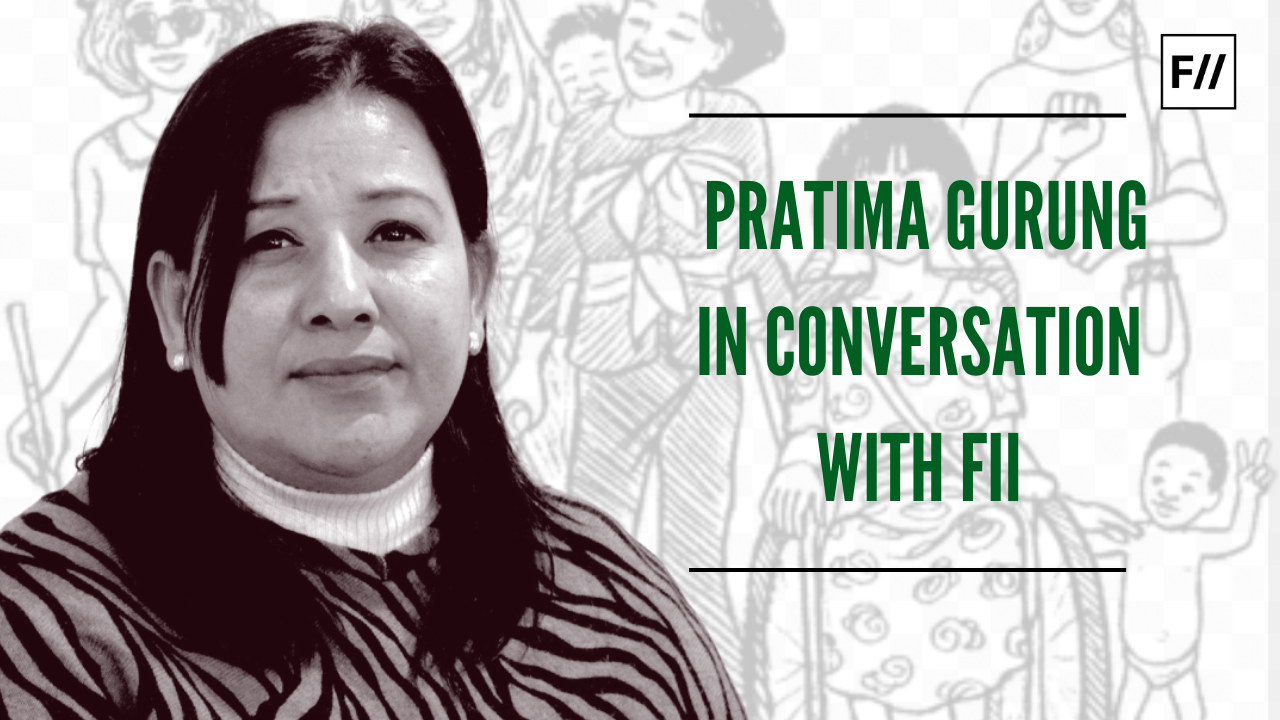




You are doing great Pratima Jee. Please keep it up.